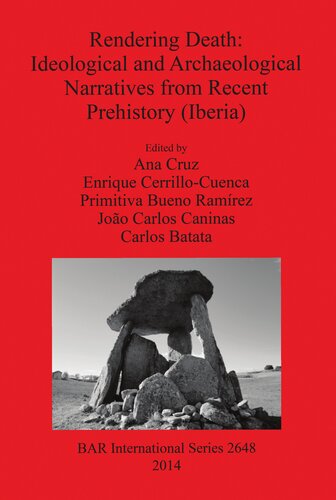

Most ebook files are in PDF format, so you can easily read them using various software such as Foxit Reader or directly on the Google Chrome browser.
Some ebook files are released by publishers in other formats such as .awz, .mobi, .epub, .fb2, etc. You may need to install specific software to read these formats on mobile/PC, such as Calibre.
Please read the tutorial at this link: https://ebookbell.com/faq
We offer FREE conversion to the popular formats you request; however, this may take some time. Therefore, right after payment, please email us, and we will try to provide the service as quickly as possible.
For some exceptional file formats or broken links (if any), please refrain from opening any disputes. Instead, email us first, and we will try to assist within a maximum of 6 hours.
EbookBell Team

4.7
46 reviewsThis book offers a perspective on death and memory in recent Prehistory on the western Iberian Peninsula (Portugal, Spanish Extremadura and Andalusia). Within this territory the contributors to this volume record the variability of architectonic forms indicative of lengthy period changes in funerary contexts and transformations in the ideological-symbolic substrate of pre-writing communities. The Portuguese karstic region explored in this study lacks megalithic monuments despite the abundant raw material. The contributors attempt to answer questions such as whether this signifies a break with our understanding of 'Megalithism' as a result of identity ideologies. Other regions exhibit an expansion of Megalithism, often with exuberant forms, reflecting territorial expansion, while in others we encounter cists, pits and tumuli – all indicators of a new funerary order. The examples investigated in this collection of papers include – for the Neolithic: Oleiros, Castelo Branco, Alto Alentejo and Mondego; for the Neo-Chalcolithic/Early Bronze Age: Tomar, Abrantes, Santarém; for the Bronze Age: Pampilhosa da Serra, Alcoutim, Abrantes, Santarém, Viseu, Vila Nova de Paiva, Castro Daire. Included in this study are the necropolis caves of Spanish Extremadura, representing as they do a chronological continuum from the Early Neolithic to the Bronze Age, and other related sites such as the Canaleja Gorge karstic complex and a range of other megalithic phenomena (menhirs, stelae, cromlechs, dolmens) in the southern Iberian Peninsula (Alentejo and Andalusia).